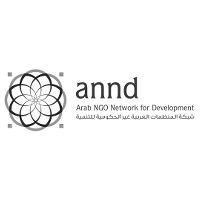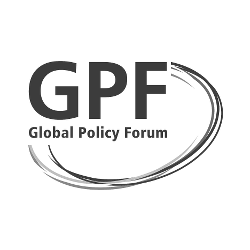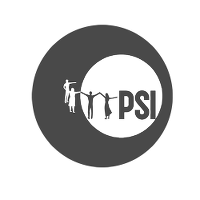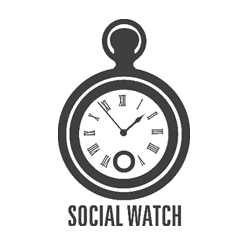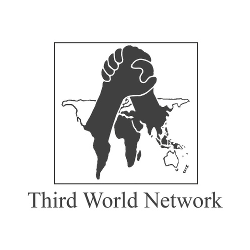By Antonia Wulff, Education International (EI)
Of all the SDGs adopted in September 2015, the measurement of progress on the education goal – SDG 4 – was arguably among the best prepared. With more than 25 years of a common global agenda, the education sector had an established architecture for cooperation and monitoring, and an obvious lead agency in UNESCO. Yet, four years in, UNESCO is underfunded to the point of incapacitation, leaving a vacuum that a range of other actors are working to fill. Add to this the failure to distinguish between the different roles and responsibilities of the public and the private sector; what follows is a battle between different approaches to implementing SDG 4.
The 2015 adoption of the SDGs was the third time in three decades that the governments of the world promised Education for All. The first time was at the Education for All Conference in 1990 in Jomtien, Thailand. The second time was at the World Education Forum in Dakar, Senegal, in 2000, where the promise was reaffirmed and translated into six goals that were to be completed by 2015.
In 2000, the education sector put in place dedicated mechanisms for monitoring and follow-up of the Education for All Agenda under the coordination of UNESCO. These mechanisms now make up the architecture for SDG 4 governance and include the Education 2030 Framework for Action, a multi-stakeholder Steering Committee, periodic Global Education Meetings, and the annual and editorially independent “Global Education Monitoring Report”.
The Framework for Action is a roadmap for implementation of SDG 4 that is signed by 184 Member States and the global education community. It outlines values and principles, modalities for effective governance, and indicative strategies and thematic indicators for each target. By specifying what they should include, the Framework makes many targets more ambitious.
The Education 2030 Steering Committee consists of Member States (three per region), representatives of UN agencies (UNESCO, UNDP, UNFPA, UNHCR, UNICEF, UN Women, the World Bank and ILO), the Organisation for Economic Cooperation and Development (OECD), and the Global Partnership for Education. It has dedicated seats for both civil society and the teaching profession; Education International occupies the latter.
In theory, the SDG 4 architecture represent a ‘best practice’ of SDG governance by bringing together the main stakeholders, guaranteeing regular assessments of progress and providing a forum for discussing new challenges and refining strategies. In theory, UNESCO is running the show as the indisputable lead on education.
In practice, numerous actors are competing for influence, particularly on defining what works in education, as so-called knowledge-based economies, grapple for growth and hunt for quick fixes in education. The SDGs are to be implemented in a political landscape where the UN system struggles to assert its relevance and values; gone are the days when UNESCO was the obvious authority in education, to which countries would turn for policy advice. This matters because agreement continues to be sought as to what the broad priorities within SDG 4 mean in practice, such as quality education or relevant learning. Governments have committed to a shared level of ambition and set of priorities but at the end of the day it is up to each government to translate them into more specific national policy.
Using the terminology of this edition of the Spotlight Report, this means that the hardware – the structures and institutions – may have far-reaching power over the software – the principles, norms and policies-- of sustainable development. Or, put more simply, how the 2030 Agenda is implemented depends on the politics and preferences of the structures and institutions in charge. [fn] For studies of similar institutional dominance in measuring other SDGs, see Fukuda-Parr/McNeill, eds. (2019). [/fn]
While different actors always have competed for dominance in the education space, this chapter looks specifically at the extent to which four players in the global education landscape promote the full scope of SDG 4: the World Bank, the OECD, the International Commission on Financing Global Education Opportunity (Education Commission), and the London-based Varkey Foundation.
The power of numbers
The responsibility for leading the SDG 4 efforts came with no new money. On the contrary, UNESCO has had a tough few years. In 2011 the USA pulled its funding following the admission of Palestine as a full member, leaving a hole of 22 percent in the already stretched UNESCO budget. As are many UN agencies, UNESCO is also grappling with an ever-growing percentage of earmarked funding, reducing the flexibility and autonomy of the organization. In the case of education, the programme budget for the biennium 2018-19 is made up of US$ 83 million in assessed contributions and US$ 301 million in earmarked voluntary contributions. [fn] See https://opendata.unesco.org/financial-flows/requirements. [/fn] Many would argue that the financial situation has had a direct and negative impact on “the size and the quality of the work of UNESCO”. [fn] Hüfner (2017), p. 98. [/fn]
As the coordinating agency, UNESCO represents a commitment to the full scope of SDG 4 and the values underpinning its agenda. But the financial situation makes UNESCO vulnerable to influence and pressure from donors. For example, the earmarked funding for the development of globally comparable learning metrics has resulted in far more progress on those indicators compared to other SDG 4 indicators. [fn] See http://uis.unesco.org/sites/default/files/documents/report-of-director-on-activities-of-the-institu…. [/fn]
This is no coincidence. In the context of results-based financing, where development is often framed as a matter of efficiency rather than complex and deeply ideological processes, learning outcomes are posited as the metric for measuring progress in education. While the Education 2030 Framework for Action commits to a broad notion of quality education, including “relevant learning outcomes in cognitive and non-cognitive domains” and the “skills, values, attitudes and knowledge that enable citizens to lead healthy and fulfilled lives, make informed decisions and respond to local and global challenges”, [fn] UNESCO (2015), para. 22. [/fn] some things are easier to measure than others.
The World Bank, as the largest funder of education in low-income countries, has a long history of undermining public education and its private sector arm continues to invest in fee-charging and profit-making education providers. The Systems Approach for Better Education Results, SABER programme is directly discouraging governments from regulating education, setting standards for private schools or limiting private actors and fee-charging.
Recently, the Bank has attempted to play more of a leadership role at the policy level. In 2018, the World Development Report [fn] See http://www.worldbank.org/en/publication/wdr2018. [/fn] was devoted to education for the first time ever, and later that year, the Bank launched the Human Capital Index, [fn] See http://www.worldbank.org/en/publication/human-capital. [/fn] based in part on learning outcomes, and supposedly encouraging Member States to invest more in education. Both of these initiatives promote an instrumentalist view of education, where its importance is determined merely by the economic growth that it yields, even if the Bank has peppered its discourse with occasional references to SDG 4.
While different in terms of both scope and mandate, the OECD promotes evidence-based policy-making and champions its assessment data as a prime indicator of education quality. Its Future of Education and Skills 2030 project looks at the broader set of knowledge and skills needed, but the long running Programme for International Student Assessment (PISA) remains the most visible initiative. Some 80 countries participated in the 2018 round and now low- and middle-income countries can participate through PISA for Development (PISA-D). While PISA-D had been in the works long before the SDGs were adopted, the OECD has been known to sell it as a tool for tracking progress towards SDG 4. [fn] Auld/Rappleye/Morris (2018). [/fn]
Both the World Bank and the OECD pledge allegiance to SDG 4 and are members of the Education 2030 Steering Committee. Yet, from an SDG 4 perspective, their overemphasis on a small part of the SDG 4 agenda – learning outcomes – risks undermining its full scope. It is not just a matter of framing education as a means to economic growth; what the World Bank and the OECD have done is assert the link between globally comparable assessments and learning outcomes, on the one hand, and a globally competitive nation, on the other. Such an overreliance on learning metrics as the indicator of the quality of education systems denies the importance of contextually relevant education, the complexity of processes of teaching and learning, and the expertise and professional autonomy of teachers. It may push systems towards global convergence and reduce the scope of education provided, marginalizing subjects that are more difficult to assess, such as education for sustainable development and climate action.
The newer kids on the block
Alongside multilateral institutions, a range of private actors are emerging under the banner of SDG 4 implementation. The Education Commission was established in 2016 by the UN Special Envoy on Global Education and former UK Prime Minister Gordon Brown. This group of prominent individuals, funded by the Norwegian government and the Rockefeller Foundation, among others, tasked itself with rethinking education financing. The UNESCO Director-General was one of the convenors but there was no formal relationship with UNESCO, and the Education Commission was established with its own separate secretariat.
Among the Commission’s initiatives are the International Finance Facility for Education (IFFEd) and the Education Outcomes Fund (EOF). IFFEd aims to unlock additional finance for education through the creation of a multilateral development bank investment mechanism, hoping to attract regional development banks to invest in education, and targeting lower middle-income countries. It is not yet operational. EOF, on the other hand, promotes privatization as well as results-based financing in education by applying impact bonds – exclusively for private actors – for the achievement of learning outcomes in Africa and the Middle East. The Fund claims that these initiatives support SDG 4, but there is no formal relationship with its governance or recognition of their incompatibility.
Another prominent private actor is the Varkey Foundation and its annual Global Education and Skills Forum (GESF), [fn] See https://www.educationandskillsforum.org/. [/fn] a high-level gathering of actors in education promoted as a celebration of the teaching profession. The Varkey Foundation, initially the Varkey GEMS Foundation, is the philanthropic branch of Dubai-based GEMS Education, the world’s largest for-profit private school system (the Varkey Group includes healthcare as well as construction businesses). In 2012, the chairman of GEMS Education, Sunny Varkey, was appointed UNESCO Goodwill Ambassador for Education Partnerships, thanks to “his contribution to forging innovative public-private partnerships to ensure that underprivileged children across the world receive a good quality education”. [fn] See http://www.unesco.org/new/en/goodwill-ambassadors/sunny-varkey/. [/fn] He defends a universal right to quality education, but a level of quality that is determined by purchasing power. [fn] Ridge/Kippels/Shami (2016). [/fn]
Though fairly new on the scene, the Foundation’s de facto convening power seems far greater than that of UNESCO, which struggled to get Ministers of Education to attend its high-level Global Education Meeting in 2018, aimed exactly at measuring SDG 4 progress. The connections and finances of the Varkey Foundation are key, but the GESF is also a venue where private actors get to rub shoulders with ministers and education stakeholders, contrary to the formal SDG 4 structures.
Wanted: government leadership
In sum, a number of actors are expanding their work and competing for influence in the education space. Importantly, this is not just a matter of turf and pride; it is a matter of ideology and power, given that the ambitious but broad priorities within the SDG 4 targets are not tied to specific policies, implementation modalities or financing arrangements. The UN discourse on the implementation of the SDGs depending on everybody chipping-in leads to all actors and actions being framed as equally important and legitimate. As discussed, this risks marginalizing a rights-based approach and defense of public quality education.
Implementation as well as the SDG 4 governance should be Member State-led. Yet, many Member States are now pushing for a greater role for the private sector, eagerly calling for public-private partnerships and private investment. Despite the guarantee and provision of education being a State responsibility, the Global Partnership for Education is currently discussing whether they should also fund private providers. While Japan is chairing the Education 2030 Steering Committee, they champion the World Bank’s Human Capital approach to education in their role as G20 chair, directly undermining the broader SDG 4 agenda. As long as governments are shying away from their responsibility, the scope and rights-based nature of SDG 4 will be under threat.
Antonia Wulff is a Coordinator at Education International (EI), the world federation of teachers’ unions.
Auld, Euan/Rappleye, Jeremy/Morris, Paul (2018): PISA for Development: How the OECD and World Bank shaped education governance post-2015. Comparative Education.
https://doi.org/10.1080/03050068.2018.1538635
Fukuda-Parr, Sakiko/McNeill, Desmond, eds. (2019): Knowledge and Politics in Setting and Measuring the SDGs, Special Issue of Global Policy 2019.
www.sum.uio.no/english/research/publications/2019/sakiko-fukuda-parr-desmond-mcneill-knowledge-and-p.html
Hüfner, Klaus (2017): The Financial Crisis of UNESCO after 2011: Political Reactions and Organizational Consequences. Global Policy 8:Suppl.5.
https://onlinelibrary.wiley.com/doi/epdf/10.1111/1758-5899.12459
Ridge, Natasha/Kippels, Susan/Shami, Soha (2016): Economy, Business, and First Class: The Implications of For-Profit Education Provision in the UAE. In World Yearbook of Education 2016: The Global Education Industry, eds. Antoni Verger, Christopher Lubienski and Gita Steiner-Khamsi. New York: Routledge.
UNESCO (2019): UNESCO Transparency Portal. Paris.
https://opendata.unesco.org/
UNESCO (2015): Education 2030: Incheon Declaration and Framework for Action for the implementation of Sustainable Development Goal 4: Ensure inclusive and equitable quality education and promote lifelong learning. Paris.
https://unesdoc.unesco.org/ark:/48223/pf0000245656
